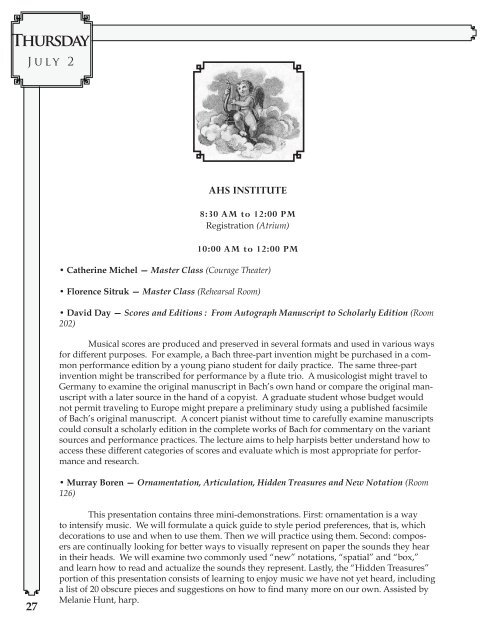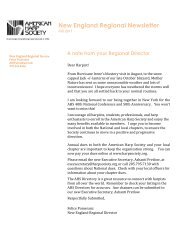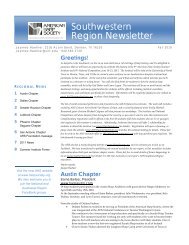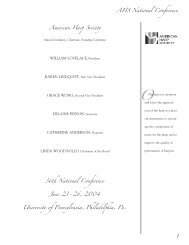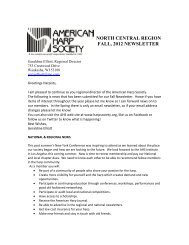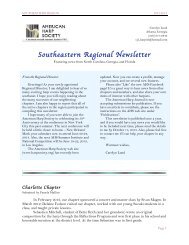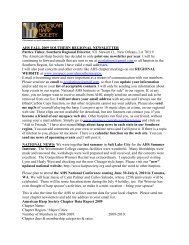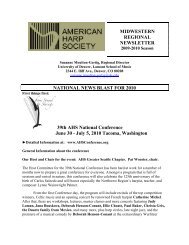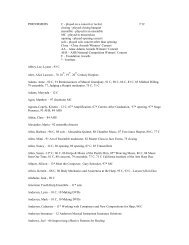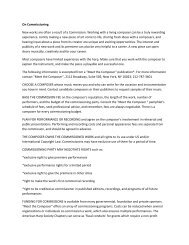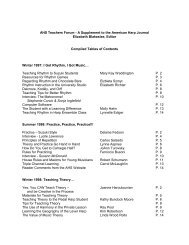Artists - American Harp Society
Artists - American Harp Society
Artists - American Harp Society
- No tags were found...
You also want an ePaper? Increase the reach of your titles
YUMPU automatically turns print PDFs into web optimized ePapers that Google loves.
ThursdayJ u l y 2AHS Institute8:30 AM to 12:00 pmRegistration (Atrium)10:00 AM to 12:00 pm• Catherine Michel — Master Class (Courage Theater)• Florence Sitruk — Master Class (Rehearsal Room)• David Day — Scores and Editions : From Autograph Manuscript to Scholarly Edition (Room202)Musical scores are produced and preserved in several formats and used in various waysfor different purposes. For example, a Bach three-part invention might be purchased in a commonperformance edition by a young piano student for daily practice. The same three-partinvention might be transcribed for performance by a flute trio. A musicologist might travel toGermany to examine the original manuscript in Bach’s own hand or compare the original manuscriptwith a later source in the hand of a copyist. A graduate student whose budget wouldnot permit traveling to Europe might prepare a preliminary study using a published facsimileof Bach’s original manuscript. A concert pianist without time to carefully examine manuscriptscould consult a scholarly edition in the complete works of Bach for commentary on the variantsources and performance practices. The lecture aims to help harpists better understand how toaccess these different categories of scores and evaluate which is most appropriate for performanceand research.• Murray Boren — Ornamentation, Articulation, Hidden Treasures and New Notation (Room126)27This presentation contains three mini-demonstrations. First: ornamentation is a wayto intensify music. We will formulate a quick guide to style period preferences, that is, whichdecorations to use and when to use them. Then we will practice using them. Second: composersare continually looking for better ways to visually represent on paper the sounds they hearin their heads. We will examine two commonly used “new” notations, “spatial” and “box,”and learn how to read and actualize the sounds they represent. Lastly, the “Hidden Treasures”portion of this presentation consists of learning to enjoy music we have not yet heard, includinga list of 20 obscure pieces and suggestions on how to find many more on our own. Assisted byMelanie Hunt, harp.


